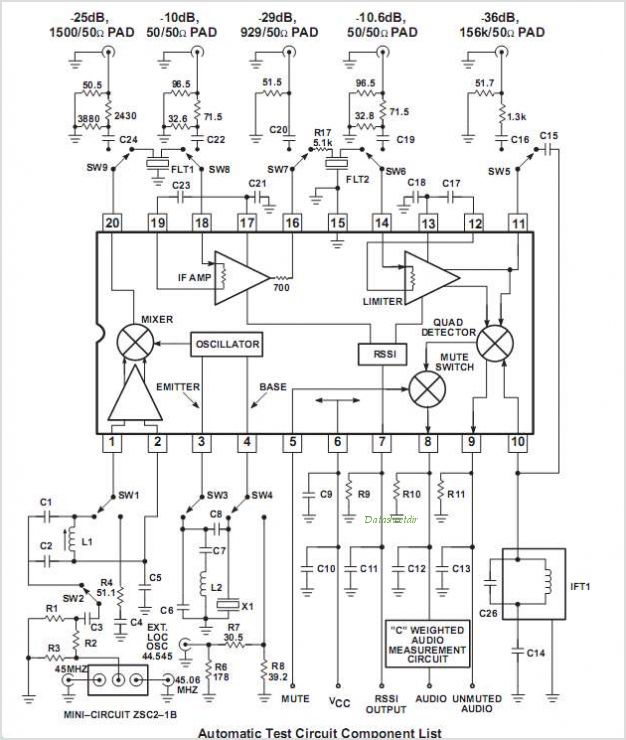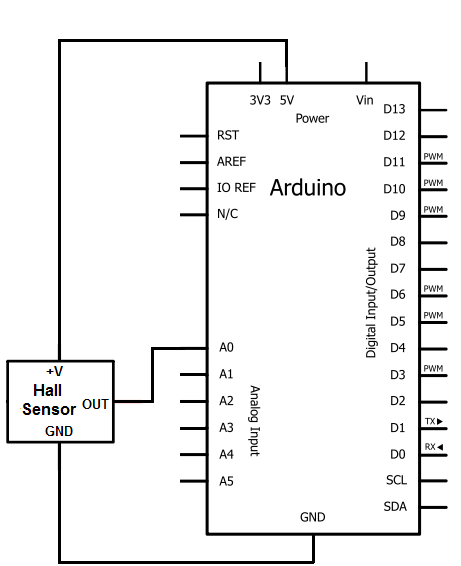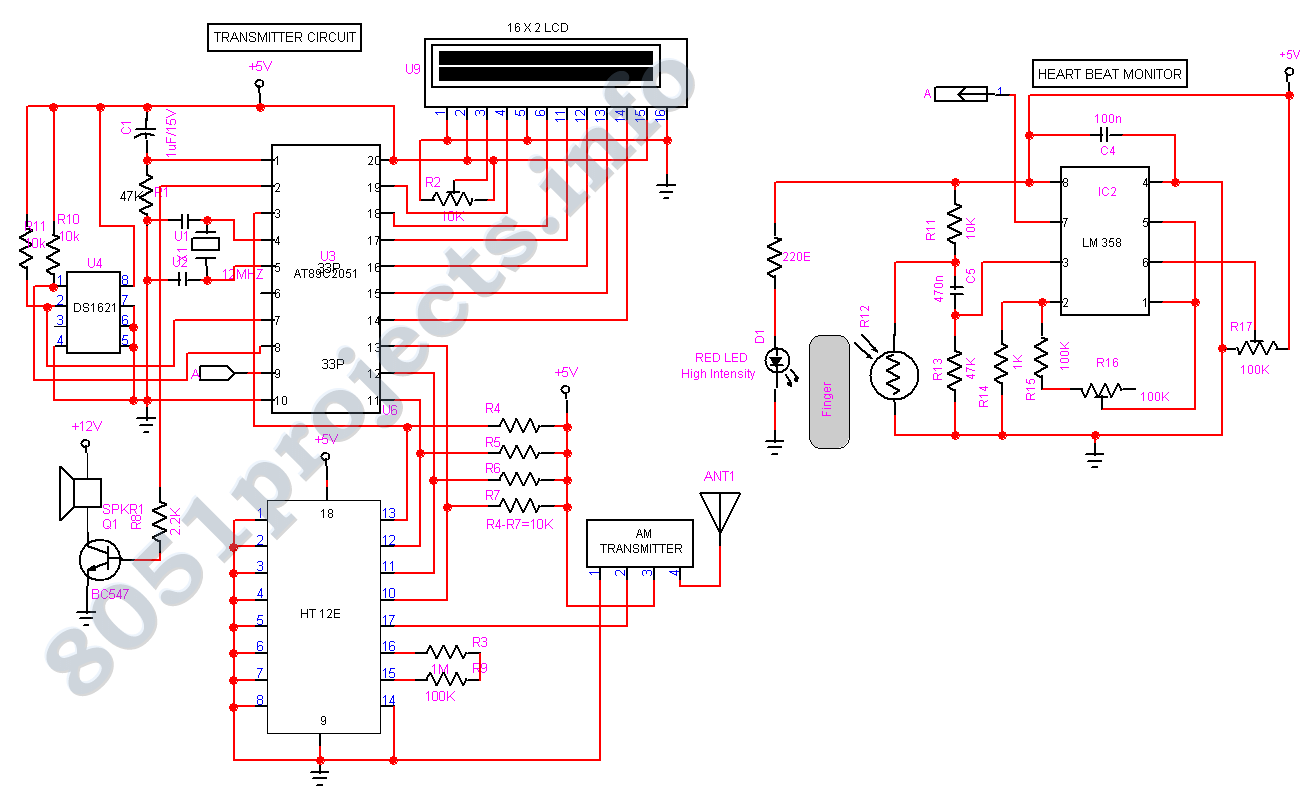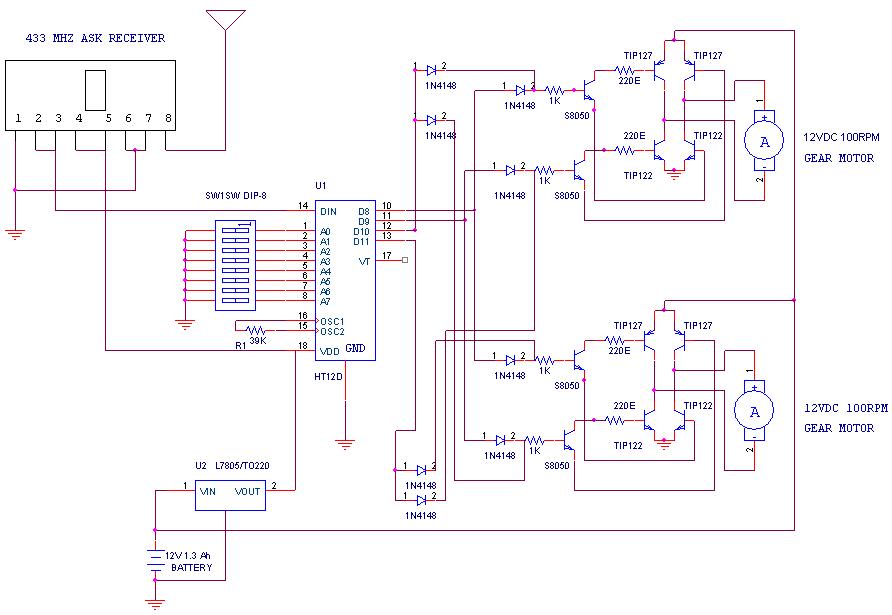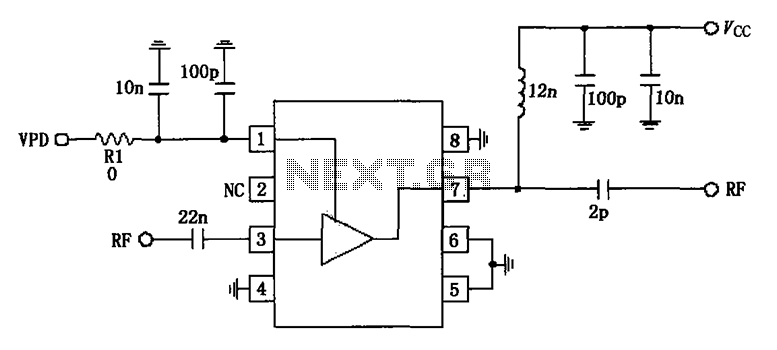
Interface circuit fsk modulation and power lines
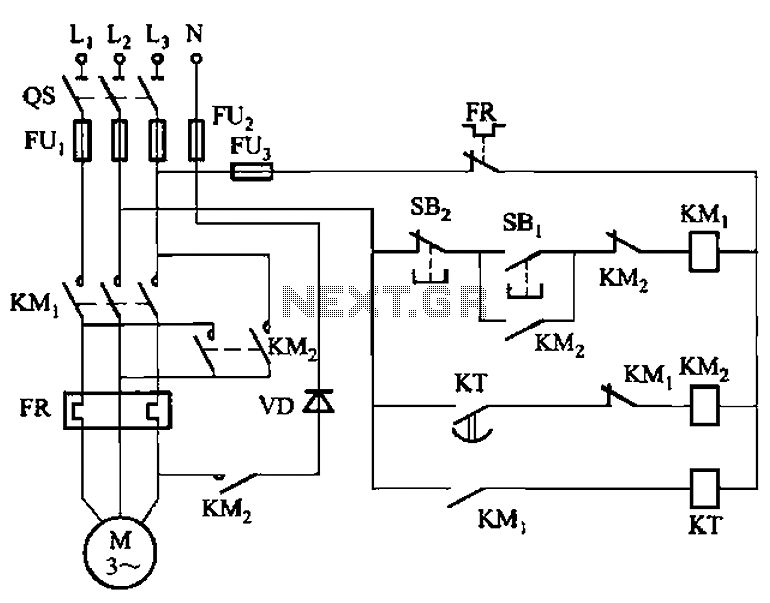
The circuit features a serial coded modulated control signal that amplifies and transmits high-voltage isolation. It utilizes a 556 timer-based circuit along with resistors R1, R2, capacitors C1, and R3, R4, C2 to form two astable multivibrators. The circuit generates two signals at frequencies of 100 kHz and 90 kHz. A serial control signal is directed to the analog switch CC4066. The output of the resonant harmonic at 100 kHz is amplified by amplifier VT1 and is isolated and coupled to the power line via transformers T, CX1, and CX2. Transformer T1 and capacitor C8 form a frequency selection circuit, while T, CX1, and CX2 create a high-voltage isolation circuit. When the serial signal is low, the 556 timer outputs a harmonic at 90 kHz to amplifier VT2, which is also resonantly amplified and isolated before being coupled to the power line. This circuit is designed to utilize the power line carrier channel for the transmission of control signals.
The circuit operates by generating two distinct frequencies for the modulation of control signals. The 556 timer IC is configured in an astable mode, which allows it to oscillate continuously, producing square waves at the designated frequencies of 100 kHz and 90 kHz. The resistors and capacitors are carefully selected to determine the frequency of oscillation, ensuring that the output signals are stable and within the desired frequency range.
The analog switch CC4066 is employed to control the flow of the serial coded modulated signal, allowing for dynamic control over the transmission process. This capability is essential for applications that require precise signal management.
The amplifiers VT1 and VT2 serve to boost the power of the generated signals, making them suitable for transmission over the power line. The use of transformers T, CX1, and CX2 provides necessary high-voltage isolation, ensuring that the control signals do not interfere with the main power line and are safely transmitted without risk of electrical shock or damage to other components.
The frequency selection circuit formed by T1 and C8 plays a crucial role in filtering and selecting the appropriate frequencies for transmission, optimizing the circuit's performance in various operational conditions. This setup allows the circuit to effectively utilize power line communication techniques, making it suitable for remote control applications and other scenarios where signal transmission over existing power infrastructure is required.
Overall, the design emphasizes reliability and efficiency, ensuring that control signals can be transmitted effectively while maintaining high-voltage safety standards. Circuit serial coded modulated control signal, amplify, and transmit high voltage isolation. 556 time base circuit and R1, R2, C1 and R3, R4, C2 form two astable multivibrator, 100kHz and 90kHz to generate two signals. Serial control signal to the analog switch CC4066 control. 5 556 feet high when the output of the resonant harmonic 100kHz to VT1 amplifier and T, CX1, CX2 isolation, coupled to the power line. T1, C8 composition selected frequency circuits, T, CX1, CX2 composed of high-voltage isolation circuit.
The serial signal is low, 556 feet 9 output harmonic 90kHz to VT2, by resonance amplification and T, CX1, CX2 isolation coupled to the power line. This circuit can use power line carrier channel to transmit control signals.
The circuit operates by generating two distinct frequencies for the modulation of control signals. The 556 timer IC is configured in an astable mode, which allows it to oscillate continuously, producing square waves at the designated frequencies of 100 kHz and 90 kHz. The resistors and capacitors are carefully selected to determine the frequency of oscillation, ensuring that the output signals are stable and within the desired frequency range.
The analog switch CC4066 is employed to control the flow of the serial coded modulated signal, allowing for dynamic control over the transmission process. This capability is essential for applications that require precise signal management.
The amplifiers VT1 and VT2 serve to boost the power of the generated signals, making them suitable for transmission over the power line. The use of transformers T, CX1, and CX2 provides necessary high-voltage isolation, ensuring that the control signals do not interfere with the main power line and are safely transmitted without risk of electrical shock or damage to other components.
The frequency selection circuit formed by T1 and C8 plays a crucial role in filtering and selecting the appropriate frequencies for transmission, optimizing the circuit's performance in various operational conditions. This setup allows the circuit to effectively utilize power line communication techniques, making it suitable for remote control applications and other scenarios where signal transmission over existing power infrastructure is required.
Overall, the design emphasizes reliability and efficiency, ensuring that control signals can be transmitted effectively while maintaining high-voltage safety standards. Circuit serial coded modulated control signal, amplify, and transmit high voltage isolation. 556 time base circuit and R1, R2, C1 and R3, R4, C2 form two astable multivibrator, 100kHz and 90kHz to generate two signals. Serial control signal to the analog switch CC4066 control. 5 556 feet high when the output of the resonant harmonic 100kHz to VT1 amplifier and T, CX1, CX2 isolation, coupled to the power line. T1, C8 composition selected frequency circuits, T, CX1, CX2 composed of high-voltage isolation circuit.
The serial signal is low, 556 feet 9 output harmonic 90kHz to VT2, by resonance amplification and T, CX1, CX2 isolation coupled to the power line. This circuit can use power line carrier channel to transmit control signals.

